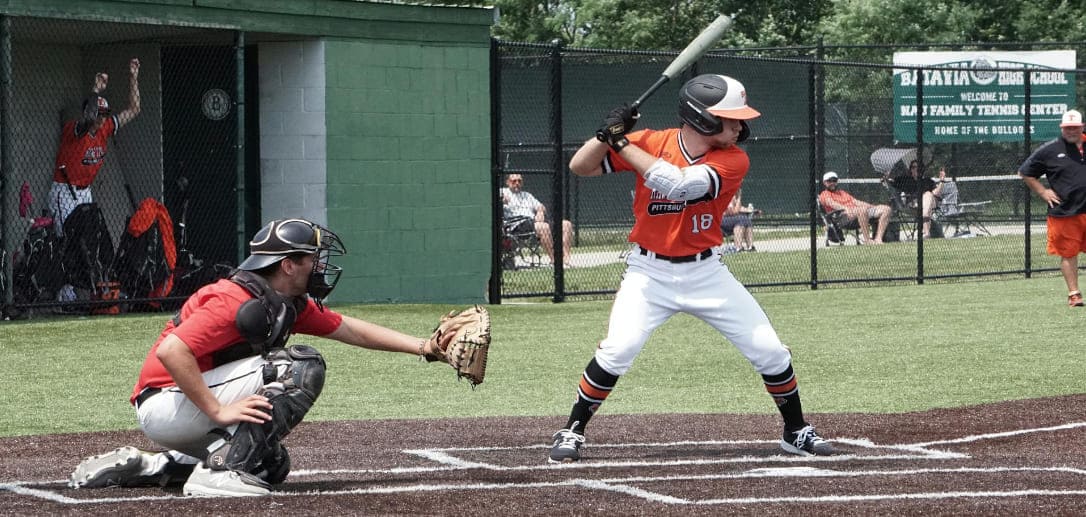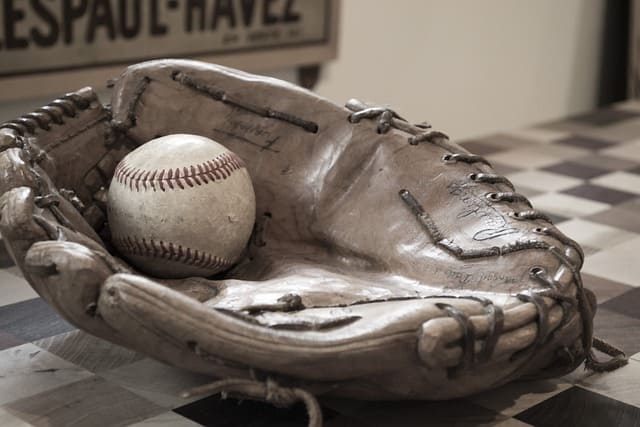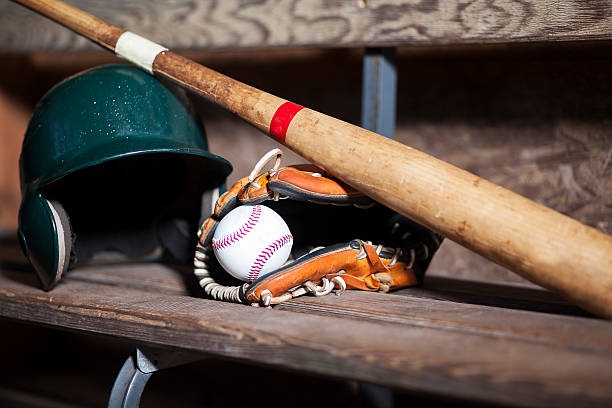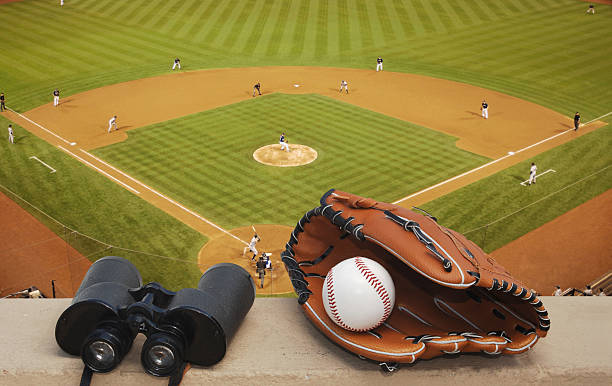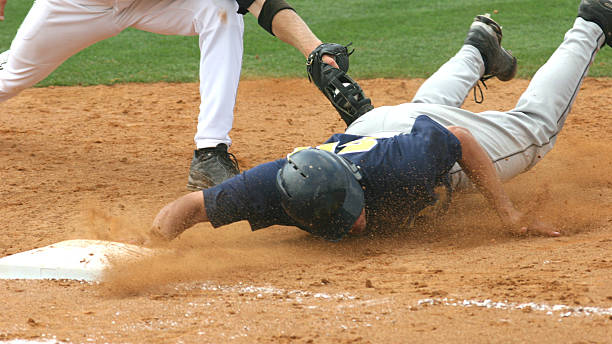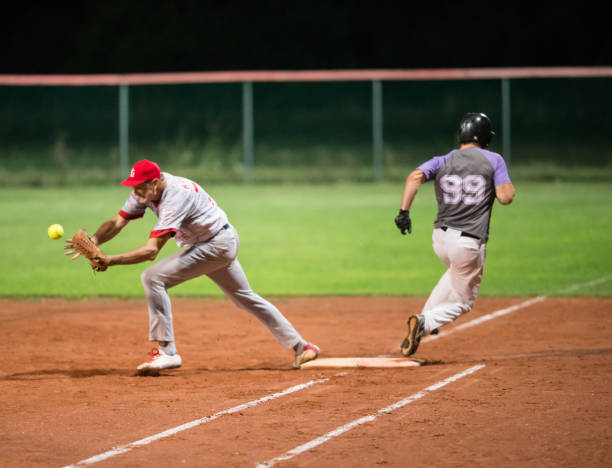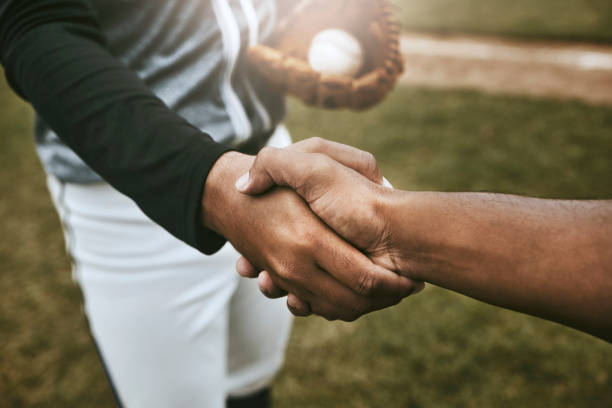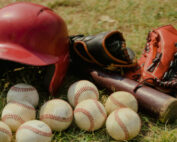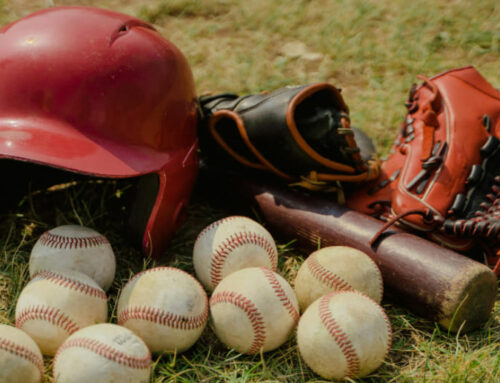Baseball for Beginners: A Comprehensive Guide to the Basics
Baseball is one of the most popular sports in the United States, enjoyed by millions of people of all ages. It’s a game that requires skill, strategy, and teamwork, making it both challenging and rewarding. However, if you’re new to the sport, it can be overwhelming to learn all the rules and terminology. That’s where this comprehensive guide to baseball for beginners comes in.
In this guide, you’ll learn everything you need to know to get started playing baseball, from the basic rules of the game to the equipment you’ll need to play. You’ll discover the different positions on the field and their roles, as well as the different types of pitches that pitchers can throw. You’ll also learn about the importance of teamwork and communication in baseball, as well as the mental strategies that can help you succeed on the field.
Whether you’re a complete beginner or just looking to brush up on your skills, this guide to baseball for beginners has everything you need to know to start playing the game with confidence. So grab your glove, step up to the plate, and get ready to hit a home run!
History of Baseball
If you are new to baseball, it’s important to know the history of this beloved American pastime. Baseball is thought to have originated in England in the mid-18th century as a variation of the game known as rounders. The game evolved over time and was brought to North America by immigrants.
In the late 19th century, baseball became a professional sport with the formation of the National League (NL) in 1876. The NL was followed by the American League (AL) in 1901. These two leagues eventually merged to form Major League Baseball (MLB) in 1903.
One of the most significant events in baseball history was the breaking of the color barrier in 1947 when Jackie Robinson became the first African American player in MLB. This event paved the way for more diversity in the sport and helped to break down racial barriers in society as a whole.
Over the years, baseball has seen many changes and innovations, including the introduction of night games, the designated hitter rule, and the use of instant replay to review umpire calls. Today, baseball remains a popular sport with a rich history and a passionate fan base.
Baseball Basics
If you are new to baseball, it is important to understand the basics of the game before diving into more advanced topics. In this section, we will cover the objective of the game, the layout of the baseball field, and some basic rules and regulations.
The Objective of the Game
The objective of baseball is to score more runs than the opposing team. A run is scored when a player hits the ball and safely reaches all four bases without being tagged out by a fielder. The team with the most runs at the end of the game, typically nine innings, wins the game.
Baseball Field Layout
A baseball field is divided into two main sections: the infield and the outfield. The infield includes the four bases (first, second, third, and home plate) and the area around them. The outfield is the grassy area beyond the infield.
The distance between the bases is 90 feet, and the distance from the pitcher’s mound to home plate is 60 feet and 6 inches. The foul lines run from home plate to the outfield fence, and any ball hit outside the foul lines is considered a foul ball.
Positions and Roles
Each team has nine players on the field at any given time, each with a specific position and role. The positions are as follows:
- Pitcher: The pitcher is responsible for throwing the ball to the batter.
- Catcher: The catcher is responsible for catching the ball thrown by the pitcher.
- First baseman: The first baseman is responsible for fielding balls hit to the right side of the field.
- Second baseman: The second baseman is responsible for fielding balls hit to the left side of the field.
- Third baseman: The third baseman is responsible for fielding balls hit down the third base line.
- Shortstop: The shortstop is responsible for fielding balls hit between second and third base.
- Left fielder: The left fielder is responsible for fielding balls hit to left field.
- Center fielder: The center fielder is responsible for fielding balls hit to center field.
- Right fielder: The right fielder is responsible for fielding balls hit to right field.
Scoring and Winning
The team with the most runs at the end of the game wins. A run is scored when a player hits the ball and then runs around all four bases. If a player hits the ball and is able to run around all four bases before the ball is returned to home plate, this is called a home run and counts as one run.
The game can end in a tie if both teams have the same number of runs at the end of the ninth inning. If the game is tied after nine innings, extra innings are played until one team has a higher score at the end of an inning.
Basic Rules and Regulations
Here are some basic rules and regulations of baseball:
- Each team has nine players on the field at a time, with one team playing offense and the other playing defense.
- The pitcher throws the ball to the batter, who attempts to hit it with a bat.
- If the batter hits the ball and it is caught by a fielder before it hits the ground, the batter is out.
- If the batter hits the ball and it lands in fair territory, the batter must run to first base. If the ball is caught before it lands in fair territory, the batter is out.
- If a fielder tags a runner with the ball before the runner reaches a base, the runner is out.
- If a fielder throws the ball to a base before the runner reaches it, and the ball arrives before the runner, the runner is out.
- A game typically consists of nine innings, with each team playing offense and defense for one inning each.
Equipment and Gear
Baseball is a sport that requires specific equipment and gear to play. In this section, we will discuss the essential equipment and gear that beginners need to know before stepping onto the field.
Baseball Glove Types
When it comes to gloves, there are several types to choose from. The most common types are infielder gloves, outfielder gloves, catcher’s mitts, and first baseman mitts. Infielder gloves are smaller and lighter, making them easier to maneuver quickly. Outfielder gloves are larger and have a deeper pocket, making it easier to catch fly balls. Catcher’s mitts are heavily padded and fingerless, designed to withstand the impact of fast pitches. First baseman mitts are longer and have a shallower pocket, making it easier to scoop up ground balls.
The Baseball
The baseball is a small, round ball made of cork, rubber, and leather. It measures approximately 9 inches in circumference and weighs around 5 ounces. The ball has two primary parts: the cover and the core. The cover is made of leather and has 108 stitches that hold it together. The core is made of cork and rubber and is responsible for the ball’s weight and bounce.
Bats
Bats are used to hit the ball. There are many different types of bats available, but the most common are made of wood or aluminum. When selecting a bat, consider your height, weight, and strength. You’ll also want to make sure the bat is the right length and weight for you.
Protective Gear
In baseball, protective gear is essential to prevent injuries. The most important protective gear is the helmet. It’s important to choose a helmet that fits properly and has a face guard for added protection. Other protective gear includes shin guards, chest protectors, and catcher’s gear. For beginners, it’s recommended to start with a basic set of protective gear and upgrade as needed.
Player Uniform Essentials
To play baseball, you’ll need a few essential items of clothing. The most important piece is the uniform, which typically includes a jersey and pants. Look for moisture-wicking and breathable fabrics to help keep you cool and comfortable during the game. You’ll also need a pair of baseball cleats, which provide traction and stability on the field. Finally, don’t forget to wear a baseball cap to shield your eyes from the sun and keep your hair out of your face.
Remember, the right equipment and gear can make all the difference in your performance on the field. Invest in quality gear that fits well and is comfortable to wear.
Playing Positions
If you’re new to baseball, understanding the different playing positions is crucial. Each position requires specific skills and responsibilities. In this section, we’ll break down the different playing positions into three categories: Pitcher and Catcher Dynamics, Infield Positions, and Outfield Positions.
Pitcher and Catcher Dynamics
The pitcher is one of the most critical positions in baseball. Their primary responsibility is to throw the ball to the catcher, who is responsible for catching the pitch and communicating with the pitcher. Catchers also play a crucial role in fielding bunts and pop-ups, and they are responsible for tagging runners out at home plate. Pitchers and catchers work together to strategize against batters and execute pitches effectively.
Infield Positions
The infield consists of four positions: first base, second base, third base, and shortstop. First basemen are responsible for catching throws from other infielders and tagging first base to get the batter out. Second basemen are responsible for fielding ground balls hit between first and second base. Third basemen are responsible for fielding ground balls hit between third base and shortstop. Shortstops are responsible for fielding ground balls hit between second base and third base and covering second base when necessary.
Outfield Positions
The outfield consists of three positions: left field, center field, and right field. Outfielders are responsible for catching fly balls hit to the outfield and throwing the ball back to the infield. Center fielders are typically the fastest outfielders and cover the most ground. Left fielders and right fielders have different responsibilities depending on the hitter and the situation.
Overall, each playing position in baseball requires specific skills and responsibilities. Understanding these positions is essential for any beginner looking to learn the game of baseball.
Batting Techniques
If you’re new to baseball, learning how to bat can be intimidating. But with the right techniques, you can become a confident hitter in no time. Here are some important things to keep in mind:
Stance and Grip
Before you even swing the bat, you need to get into the right stance and grip. Your stance should be comfortable and balanced, with your feet shoulder-width apart and your knees slightly bent. Your grip on the bat should be firm but not too tight, with your top hand resting on the bat handle and your bottom hand gripping the knob at the bottom.
Swing Mechanics
When it comes to swinging the bat, there are a few key things to keep in mind. First, you want to keep your eye on the ball at all times. Second, you want to step forward with your front foot as you swing, using your hips and core to generate power. Finally, you want to follow through with your swing, extending your arms fully and keeping your eye on the ball until you make contact.
Bunting Basics
Bunting is a technique used to hit the ball softly and place it in a specific location on the field. To bunt, you want to hold the bat with your hands close together and your fingers wrapped around the barrel. As the pitcher throws the ball, you want to meet it with the bat and angle it downward, so that the ball falls gently to the ground. Bunting can be a useful technique for moving runners into scoring position or surprising the defense with a well-placed hit.
Pitching Fundamentals
Pitching is one of the most important aspects of baseball and it can be a bit daunting for beginners. However, with the right fundamentals, anyone can become a great pitcher. Here are the three main aspects of pitching that every beginner should know:
Types of Pitches
There are many different types of pitches in baseball, but every pitcher has their own set of pitches that they are comfortable with. Some of the most common pitches include the fastball, curveball, slider, changeup, and knuckleball. Each pitch has its own unique mechanics and grip, so it’s important to practice and perfect each one.
Pitching Mechanics
Pitching mechanics are the foundation of a great pitch. Proper mechanics can help you throw with more accuracy and power, while also reducing the risk of injury. Some of the key mechanics to focus on include the windup, stride, arm angle, and follow-through. It’s important to work with a coach or experienced pitcher to ensure that your mechanics are correct.
Pitcher Strategy
Pitcher strategy is all about reading the batter and making smart decisions on the mound. Every pitch should have a purpose and be executed with precision. Some strategies to consider include changing speeds, mixing up pitches, and targeting different parts of the strike zone. It’s also important to pay attention to the batter’s tendencies and adjust your strategy accordingly.
Overall, pitching is a complex and challenging part of baseball, but with the right fundamentals and practice, anyone can become a great pitcher. Remember to focus on your mechanics, experiment with different pitches, and develop a solid strategy to keep batters off balance.
Base Running
As a beginner in baseball, understanding base running is essential. Base running is the act of running around the bases in the correct order to score runs. It is important to master the fundamentals of base running in order to become a successful player. In this section, we will cover the basics of base running, including stealing bases, sliding techniques, leadoff, and tagging up.
Stealing Bases
Stealing bases is the act of running from one base to another while the pitcher is throwing the ball to the catcher. It is a risky move, but it can be a game-changer if done correctly. To steal a base, you need to have good speed and timing. It is important to watch the pitcher’s movements and wait for the right moment to take off. You should also pay attention to the catcher’s arm, as a good catcher can easily throw you out if you’re not careful.
Sliding Techniques
Sliding is an important skill in base running. It is used to avoid tags and reach the base safely. There are two main types of slides: feet-first and head-first. Feet-first is the safer option, as it reduces the risk of injury. Head-first is faster but more dangerous, as it can lead to head or hand injuries. To slide properly, you need to approach the base at an angle, lower your center of gravity, and slide with your hands and feet leading the way.
Leadoff and Tagging Up
Leadoff is the distance you stand away from the base while waiting for the pitcher to throw the ball. It is important to have a good leadoff to increase your chances of stealing a base. Tagging up is the act of returning to the base after a fly ball has been caught. It is important to tag up if you are not sure if the ball will be caught, as it allows you to advance to the next base if the ball is caught.
In conclusion, base running is an important aspect of baseball that requires practice and patience. By mastering the fundamentals of base running, you can become a more successful player and help your team win more games. Remember to always pay attention to the pitcher’s movements, slide properly, and have a good leadoff and tagging up technique.
Defensive Skills
As a beginner in baseball, it’s important to master the basic defensive skills to become a reliable player on the field. In this section, we’ll cover three essential defensive skills: fielding ground balls, catching fly balls, and throwing techniques.
Fielding Ground Balls
Fielding ground balls is a fundamental skill that every baseball player must learn. To field a ground ball, you need to get in the proper fielding position. This means getting low with your knees bent and your glove out in front of you. As the ball approaches, move your glove towards the ball and scoop it up with your glove hand. Once you have the ball, you can either throw it to first base or to another base, depending on the situation.
To practice fielding ground balls, you can use drills like the “Round the Horn” drill. In this drill, players form a circle and take turns fielding ground balls and throwing to each base. Another drill is the “Three-Player Ground Ball” drill, where three players work together to field and throw the ball.
Catching Fly Balls
Catching fly balls is another important defensive skill. To catch a fly ball, you need to get under the ball and track it with your eyes. As the ball comes down, move your glove towards the ball and catch it with both hands. When catching fly balls, it’s important to keep your eye on the ball and not take your eye off it until it’s in your glove.
To practice catching fly balls, you can use drills like the “Fly Ball Drill.” In this drill, players take turns hitting fly balls to each other and catching them. Another drill is the “Bucket Drill,” where players catch fly balls while standing inside a bucket.
Throwing Techniques
Throwing techniques are crucial for defensive players. To make an accurate throw, you need to have proper throwing mechanics. This means stepping towards your target, following through with your arm, and releasing the ball at the right moment. When throwing, it’s important to use your whole body and not just your arm.
To practice throwing techniques, you can use drills like the “Long Toss Drill.” In this drill, players stand far apart and throw the ball back and forth to each other, gradually increasing the distance. Another drill is the “Crow Hop Drill,” where players practice throwing while using a crow hop to generate more power.
By mastering these basic defensive skills, you’ll become a valuable player on your team and be able to contribute to your team’s success.
Gameplay Strategies
understanding the gameplay strategies is crucial to your success on the field. Here are some key strategies to keep in mind:
Offensive Strategy
When you are up to bat, the goal is to hit the ball and score runs. One of the most important offensive strategies is to pay attention to the count. The count refers to the number of balls and strikes against you. Understanding the count can help you determine whether to swing or take a pitch, and can also help you anticipate the type of pitch that may be coming.
Another key offensive strategy is to be aware of the situation on the field. For example, if there are runners on base, you may want to focus on hitting the ball to the opposite field to advance the runners. If there are two outs, you may want to be more aggressive at the plate to try to score a run.
Defensive Formation
When you are on defense, it is important to have a solid formation to prevent the opposing team from scoring runs. One common defensive formation is the infield shift, where players move to one side of the field to defend against a batter who tends to hit the ball to that side.
Another important defensive strategy is to pay attention to the batter’s tendencies. By studying the batter’s previous at-bats, you can anticipate where they are likely to hit the ball and adjust your formation accordingly.
Signs and Signals
In baseball, signs and signals are used to communicate between players and coaches. As a beginner, it is important to learn the different signs and signals used by your team.
For example, the catcher may use hand signals to communicate with the pitcher about what type of pitch to throw. The third base coach may use signs to signal whether a runner should steal a base or not.
By understanding the signs and signals used in baseball, you can better communicate with your teammates and make more informed decisions on the field.
Remember, mastering these gameplay strategies takes time and practice. But by focusing on these key areas, you can improve your performance on the field and become a valuable player for your team.
Baseball Etiquette
it is important to understand the unwritten rules and sportsmanship that are expected on the field. Here are some key points to keep in mind:
Sportsmanship
Sportsmanship is an essential part of baseball. It is important to show respect to your teammates, opponents, and the umpires. Here are some tips to help you display good sportsmanship:
- Always shake hands with your opponents after the game, win or lose.
- Don’t argue with the umpires’ decisions. Respect their calls, even if you don’t agree with them.
- Don’t show off or taunt the other team. Celebrate your successes, but do it in a way that shows respect for the other team.
The Unwritten Rules
Baseball has many unwritten rules that players are expected to follow. These rules are not written down, but they are widely understood and followed. Here are some of the most important unwritten rules:
- Don’t show up the other team. This means that you shouldn’t celebrate excessively after a home run or make a big show of stealing a base when you are already winning by a lot.
- Don’t bunt to break up a no-hitter. If a pitcher has not allowed a hit through several innings, it is considered poor sportsmanship to try to bunt your way on base just to break up the no-hitter.
- Don’t steal bases when you are already winning by a lot. This is considered unsportsmanlike and disrespectful to the other team.
By following these unwritten rules and displaying good sportsmanship, you will earn the respect of your teammates, opponents, and umpires. This will make the game more enjoyable for everyone involved.
Understanding Statistics
If you are new to baseball, understanding the various statistics can be overwhelming. However, these stats are essential in analyzing a player’s performance. In this section, we will go over some of the most common statistics in baseball.
Common Batting Statistics
Batting average (AVG) is the most well-known statistic in baseball. It measures a player’s batting performance by dividing the number of hits by the number of at-bats. A batting average of .300 is considered excellent, while a batting average of .250 is average.
On-base percentage (OBP) is another important statistic that measures how often a player reaches base. It takes into account not only hits but also walks and hit-by-pitches. A player with a high OBP is a valuable asset to the team.
Slugging percentage (SLG) measures a player’s power at the plate. It takes into account not only the number of hits but also the total bases earned from those hits. A high slugging percentage indicates a player who can hit for extra bases.
Pitching Statistics
Earned run average (ERA) is the most common statistic used to evaluate a pitcher’s performance. It measures the number of earned runs a pitcher allows per nine innings pitched. A low ERA is desirable, with anything below 4.00 considered good.
Strikeouts per nine innings pitched (K/9) measures a pitcher’s ability to strike out batters. It is calculated by dividing the total number of strikeouts by the total number of innings pitched, then multiplying by nine. A high K/9 indicates a dominant pitcher.
Walks plus hits per inning pitched (WHIP) measures a pitcher’s ability to prevent baserunners. It takes into account the number of walks and hits allowed per inning pitched. A low WHIP indicates a pitcher who can keep batters off the bases.
Fielding Metrics
Fielding percentage (FP) measures a player’s defensive ability. It is calculated by dividing the number of successful defensive plays by the total number of chances. A high fielding percentage indicates a reliable defender.
Ultimate Zone Rating (UZR) is a more advanced statistic that measures a player’s defensive ability based on the number of runs saved. It takes into account a player’s range, arm strength, and errors. A high UZR indicates a player who can save runs with their defense.
In summary, understanding baseball statistics is essential in analyzing a player’s performance. By knowing the most common batting, pitching, and fielding metrics, you can better appreciate the game and the players who play it.
Joining a Team
joining a team is a great way to learn the fundamentals of the game. There are different types of teams you can join, such as local leagues, school teams, and amateur clubs. Each type of team has its own advantages and disadvantages, so it’s important to choose the one that is right for you.
Local Leagues
Joining a local league is a great way to get started in baseball. Local leagues are usually organized by age group, so you will be playing with other kids your age. This can be a great way to make new friends and learn the game together. Local leagues also provide a structured environment to learn the fundamentals of baseball, such as throwing, catching, hitting, and running bases.
School Teams
If you are a student, joining your school’s baseball team can be a great way to get involved in the sport. School teams usually have a coach who can teach you the basics of the game, and you will have the opportunity to compete against other schools. Joining a school team can also be a great way to represent your school and build school spirit.
Amateur Clubs
If you are looking for a more competitive environment, joining an amateur club may be the right choice for you. Amateur clubs are usually made up of more experienced players who are looking to play at a higher level. These teams often play in local or regional leagues, and may even travel to other cities or states for tournaments. Joining an amateur club can be a great way to challenge yourself and improve your skills.
No matter what type of team you choose to join, it’s important to remember that baseball is a team sport. You will be working with other players to achieve a common goal, so it’s important to be a good teammate and work together. With practice and dedication, you can become a valuable member of your team and enjoy all the benefits that come with playing baseball.
Watching Baseball
If you’re new to baseball, watching a game can be a bit overwhelming. But with a basic understanding of the rules and some tips, you can enjoy the game like a pro. In this section, we’ll cover the basics of how to watch a baseball game.
Understanding the Broadcast
When watching a baseball game, it’s important to understand the broadcast. Most games are broadcast on television or online, and the announcers will provide commentary throughout the game. They will explain what’s happening on the field, provide background information on the players, and offer insights into the strategies being used by the teams.
In addition to the announcers, there are several visual elements that can help you understand the game. For example, the score graphic will show you the current score, the inning, and the number of outs. The camera angles will also change depending on the situation on the field, so you can get a better view of the action.
Famous Tournaments and Leagues
If you want to learn about baseball, you need to know about Major League Baseball (MLB). It is the professional baseball organization in the United States and Canada. It comprises two leagues: the American League (AL) and the National League (NL). Each league has 15 teams, divided into three divisions (East, Central, and West). The league is overseen by a commissioner, who is elected by the owners of the 30 teams.
In addition to MLB, there are several other professional leagues around the world, such as the Nippon Professional Baseball (NPB) league in Japan and the Korean Baseball Organization (KBO) in South Korea. These leagues have their own unique rules and styles of play, but they all share the same love of the game.
Overall, watching baseball can be a fun and exciting experience, especially if you have a basic understanding of the rules and the broadcast. So grab some snacks, find a comfortable spot, and enjoy the game!
Frequently Asked Questions
What are the basic rules of baseball?
Baseball is a game played between two teams of nine players each. The objective of the game is to score runs and get outs. The game is divided into nine innings, with each team getting a turn to bat and field. The team with the most runs at the end of the game wins. The basic rules of baseball include pitching, batting, and fielding. To begin the game, the pitcher tosses the ball to the hitter. Players must hit the ball and go around the four bases counterclockwise to score runs. Runners try to get to the bases safely to wait for the next batter. They are out if the ball is caught or tossed to first base before hitters can get to it.
How can I learn to play baseball step by step?
If you’re a beginner, the best way to learn how to play baseball is by starting with the basics. Begin by learning the rules of the game and the positions of the players. Watch videos, read books, and articles to gain a better understanding of the game. You can also join a local team or club to practice your skills and get feedback from experienced players and coaches.
What equipment is necessary for a beginner to start playing baseball?
For playing baseball, essential equipment includes a baseball glove, bat, protective gear such as helmets and shin guards, and cleats. Choosing the right equipment is crucial for performance and safety. You can find affordable beginner’s gear at sports stores or online.
What are the positions in a baseball team, and what does each player do?
There are nine positions in a baseball team. The positions include pitcher, catcher, first baseman, second baseman, third baseman, shortstop, left fielder, center fielder, and right fielder. Each position has its own specific role and responsibilities. For example, the pitcher throws the ball to the catcher, and the catcher catches the ball and throws it back to the pitcher. The first baseman covers first base and catches the ball when thrown by the pitcher. The second baseman and shortstop cover the infield, and the third baseman covers third base. The outfielders cover the outfield and catch the ball when hit by the batter.
How can kids get started with playing baseball?
Kids can get started with playing baseball by joining a local little league team or youth baseball program. These programs are designed for kids of all ages and skill levels and provide a safe and fun environment for learning and playing the game.
Is there an age limit to start learning and playing baseball?
No, there is no age limit to start learning and playing baseball. People of all ages can enjoy playing baseball as a hobby or a sport. However, it’s important to start with the basics and gradually work your way up to more advanced techniques and skills.
RECENT POSTS
History of Baseball
History of Baseball: From Its Origins to Modern TimesBaseball is one of the most popular sports in the United States, with millions of fans tuning in to watch games each year. The sport has a [...]
Hunting Falconry
History of Hunting Falconry: An Overview of Falconry's Evolution and Significance Are you interested in learning about the ancient practice of hunting with trained birds of prey? Falconry has been practiced for thousands of [...]
Hunting Destinations in 2024
Hunting Destinations in 2024: Top Picks for Avid Hunters Are you looking for exciting hunting destinations to explore in 2024? Whether you're a seasoned hunter or just starting, there are plenty of options available [...]
History of hunting dogs
Explore the History and Significance of Hunting Dogs: A Comprehensive Guide If you're a hunting enthusiast, then you know the importance of having a reliable hunting dog by your side. Hunting dogs have been [...]
Hunting as a Hobby
Hunting as a Hobby: An Overview Hunting is a popular outdoor activity enjoyed by millions of people worldwide. While some hunt for food, others do it as a hobby. Hunting as a hobby can [...]

